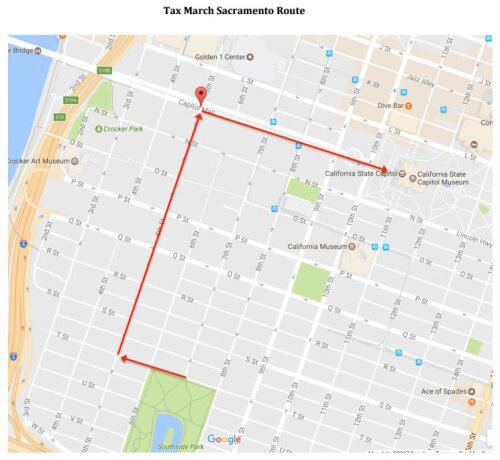Contents:


As the name suggests, the “completed” contract method refers to 100% completion & not stage-wise. This method relates to the accounting system followed by the contractor. Progress billings are not recorded as revenues, but are accumulated in billings on construction in progress account that is deducted from the inventory account (i.e., a contra account to inventory). The percentage-of-completion method recognizes revenue on a long-term project as work progresses.
Sometimes there is also substantial uncertainty about the collectivity of sales proceeds. Under this method, sales are recognized when cash is received but no gross profit is recognized until all of the costs of goods sold are collected. That is, it recognizes profit only when cash collections exceed the total cost of the product sold. The percentage of completion method is an accounting method in which the revenues and expenses of long-term contracts are reported as a percentage of the work completed. Generally Accepted Accounting Principles , as long as you can make estimates that are “sufficiently dependable.” Under the PCM, the actual costs incurred are compared to expected total costs to estimate percentage complete. Alternatively, the percentage complete may be estimated using an annual completion factor.

Where the completed contract method looks at contracts, however, ASC 606 looks at performance obligations. Additionally, contractors who wish to take advantage of tax deferral benefits from point-in-time transfers, they may need to make sure that their contracts provide the appropriate conditions for that method. Because income and expenses hit all at once, income statements become less useful in the short term and can show major, sudden swings. Additionally, the IRS has several restrictions for when a contractor can use it. Completed-contract-method projects also must be completed under a specified timeframe. Some companies that were required to use the percentage of completion method under prior tax law may qualify for an exception that was expanded by the Tax Cuts and Jobs Act .
Cost-to-Cost Method
Unstable bottom lines can be perceived as signs of risks or inconsistencies. Requirements for contractors using the completed contract method include an estimated project completion date of fewer than two years. The contractor should also not have gross receipts that exceed $25 million for the preceding three years. This method allows businesses to defer all expenses and revenue recognition until the completion of a contract. Costs are not estimated beforehand, since progress may involve many small projects taking place simultaneously.
APOGEE ENTERPRISES, INC. MANAGEMENT’S DISCUSSION AND ANALYSIS OF FINANCIAL CONDITION AND RESULTS OF OPERATIONS (form 10-K) – Marketscreener.com
APOGEE ENTERPRISES, INC. MANAGEMENT’S DISCUSSION AND ANALYSIS OF FINANCIAL CONDITION AND RESULTS OF OPERATIONS (form 10-K).
Posted: Fri, 21 Apr 2023 20:07:07 GMT [source]
In US GAAP, during the construction process, the company does not recognize revenues or expenses. They will realize both when the contract is substantially completed. The advantages of the completed contract method are that it allows businesses to defer revenue and tax obligations until payment is assured.
Syncing financial statements and tax records
Working capital measures the ability of a business to pay off its short-term debt. The term “full cost” refers to the cost of manufacturing and selling a unit of product and includes both fixed and variable costs. The biggest disadvantage is that if all the contracts finish off in a single year, the financials picture will be untidy & the analyst may observe huge fluctuations. Contractors use this method only when there is uncertainty about the completion of the contract. Everything gets postpone until the contractor finishes off the contract & gets confirmation from the customer.
The completed contract method allows all revenue and expense recognition to be deferred until the completion of a contract. CCM accounting is helpful when there is unpredictability surrounding when the company will be paid by their customer and uncertainty regarding the project’s completion date. Finally, when assessing and choosing revenue recognition methods, contractors should consult with their construction-specific CPA. As mentioned, there are many revenue recognition methods that a company can choose to employ. One of the most common is the sales-based method, where the entirety of the revenue is recognized as soon as the sale is complete.

The main disadvantage of this method is that the contractor does not necessarily recognize the income in the period it is earned. As a result, there is a possibility that additional tax liability can be created as the whole project revenue will occur in a single period for tax reporting. The completed contract method of accounting considers all income and expenses directly related to a long-term contract as received when work is completed. The date of completion is spelled out in the contract and is often months or even years away from the date work begins. Accounting method refers to the rules a company follows in reporting revenues and expenses in accrual accounting and cash accounting.
For these contracts the revenue is recognized before delivery, and there are two methods to do so. This post covers the certified payroll requirements for contractors working on federal construction projects. These adjustments ensure that the income shown on the income statement is reflective of the percentage of completion method. B. The completed-contract method produces greater net income during the period of construction than the percentage-of-completion method.
Some companies prefer the cash method of accounting for revenue and expenses. The cash method recognizes revenue when cash is received from clients, and expenses are recorded when they’re paid. Although the cash method might be straightforward, it can delay recording revenue and expenses until the money is earned or paid out. In addition to the completed contract method, another way to recognize revenue for a long-term contract is the percentage of completion method.
The change in net working capitalor is unaware whether the contract is profitable as of today or not since none of the usual accounting methods is followed. The contracts require a shorter period of time for completion (say 2-3 months) & month-to-month percentage completion appears illogical. In such situations, the contractor may prefer for completion contract method. These differences in the billing amount are recorded as journal entries in the general ledger. They increase or decrease the amount of revenue recognized on the income statement and create an asset or a liability on the balance sheet. Instead of costs, percentage of completion can also be calculated using units or labor hours, depending on the nature of the business.
Guide to Alternative Dispute Resolution (ADR) in Construction
If the contract can’t define progress or percentage completion based on output, then GAAP permits the “input” methods that rely on costs or efforts. Whichever method is chosen, GAAP requires that the contractor exercise judgment to carefully tailor the input or output measure to the circumstances. Additionally, in order for your revenue estimates with PoC to be accurate, you must be reasonably assured that you will collect on your receivables according to the timeline laid out in the contract. If you spend months or years recognizing incremental revenue and then have to move all of it into bad debt long after the project is completed, it could end up complicating your accounting.
There should be no terms in the contract with the only purpose of deferring tax. After all of the above steps are completed, it is now time to compute the percentage of completion. As previously mentioned, the degree of completion of construction is typically estimated by dividing the total construction costs incurred to-date by the total estimated costs of the contract, or job. However, other rational and systematic measures of progress toward completion may be employed if appropriate and justifiable, “having due regard to the work performed”. Second, and equally as important, the contractor would need to ensure that all relevant direct and indirect costs and expenses of construction have been appropriately applied to construction contracts. The omission of this step could have serious ramifications on the revenues recognized under the percentage-of-completion method of accounting for construction contracts for the same reason as mentioned above.
ARGAN INC MANAGEMENT’S DISCUSSION AND ANALYSIS OF FINANCIAL CONDITION AND RESULTS OF OPERATIONS. (form 10-K) – Marketscreener.com
ARGAN INC MANAGEMENT’S DISCUSSION AND ANALYSIS OF FINANCIAL CONDITION AND RESULTS OF OPERATIONS. (form 10-K).
Posted: Mon, 17 Apr 2023 20:12:04 GMT [source]
Once you’ve determined that PoC is a good fit for your organization, then you need to have a plan for implementation. Make sure your methods of calculating revenue and expenses are standardized across all projects. Decide which methods you will use to verify the expenditures incurred during the various periods for which you will be recognizing revenue and expenses. Set your accounts receivable team up for success so they can invoice quickly and accurately, and collect promptly upon completion.
Completed-Contract Method: Meaning, How to Calculate It, Impacts – Penpoin
1) First, it can be challenging to estimate the completion date of a construction project. Join the free certificate course to learn the foundations of financial management and accounting in construction, taught by the man who wrote the textbook . IV. A reliable estimate of the portion of the contract that has been completed can be made.
DXP ENTERPRISES INC Management’s Discussion and Analysis of Financial Condition and Results of Operations (form 10-K) – Marketscreener.com
DXP ENTERPRISES INC Management’s Discussion and Analysis of Financial Condition and Results of Operations (form 10-K).
Posted: Mon, 17 Apr 2023 21:29:14 GMT [source]
This assumes that the project outcomes cannot be reliable estimated. Revenues, expenses, and resulting gross profit are recognized only when the contract is completed. Generally accepted accounting principles require that revenue be recognized in the period it was earned. This means for most long-term projects, the percentage of completion method should be used.International Financial Reporting Standards provides guidance on the treatment of stored materials in income recognition.
With this method revenue, expenses and gross profit are deferred until the completion of the contract. The advantage of using this method is that it allows for the maximum deferral of income taxes as revenue is not taxable until the job is completed. Under the completed contract method revenue from contracts are not matched with their respective costs. As a result this method of accounting can pose some risks, one of which is a volatile bottom line.

One of the fundamental changes under IFRS 15 is the treatment of long-term contracts. Previously, companies could use the completed contract method, which only recognized revenue once the contract was concluded and all deliverables had been delivered. IFRS 15, Revenue from Contracts with Customers, is a new accounting standard issued by the International Accounting Standards Board in May 2014.
Long-Term Methods of Accounting
The company obtained a building construction contract worth Rp400 for two years. Assume, the company incurs a cost of Rp220 in the first year and Rp80 in the second year. Under US GAAP and IFRS, companies can use this method when results cannot be measured reliably.
It’s a common revenue recognition practice for businesses that undertake construction contracts, short projects, and manufacturing sectors. From an optics perspective, this can make a company’s revenue and profitability appear inconsistent to outside investors. For example, if a company needs to apply for credit from a bank, it may be challenging to prove how much revenue the company generates using the completed contract method. Accrual accounting is typically the most common method used by businesses, such as large corporations. However, some small businesses use the cash method, which is also called cash-basis accounting.
- Under US GAAP and IFRS, companies can use this method when results cannot be measured reliably.
- In this article, we’ll explain the percentage of completion method, how it works, and give you some real-life examples.
- Often time the best answer is a not a simple yes or no, but a strategy developed just for you.
- Furthermore, if a business seeks outside investors, it can be challenging to prove to them the value of the company during times of little-to-no incoming revenues.
For a particular year, the percent would be the costs incurred that year divided by the estimated total costs of the contract. An analyst should identify differences in companies’ revenue recognition methods and adjust reported revenue where possible to facilitate comparability. Furthermore, the method allows companies to avoid estimation errors as in the percentage completion method. These costs will be seen at the end of the contract as in US GAAP or incurred during construction as in IFRS. The completed contract method should be used when contracts have multiple deliverables and it is difficult to determine the amount of revenue that will be recognized under the percentage of completion method.
The standard recognizes revenue from contracts with customers and replaces the previous revenue recognition guidance. At the completion of the contract, all the accounts are closed, and the entire gross profit from the construction project is recognized. For example, a project that has estimated costs of $100,000 has incurred $50,000 in costs so far. Dividing the costs ($50,000) into total estimated costs ($100,000), you find that the project is 50% complete. If there is uncertainty about the probability of the collection of the revenues, then the installment method is used, which recognizes revenue as the cash is received, using the gross profit percentage. Under IFRS, revenue is only reported to the extent of contract costs incurred.
- A company using this method may arrange milestones throughout the building process or estimate the percentage of the project completed.
- In addition to the completed contract method, another way to recognize revenue for a long-term contract is the percentage of completion method.
- In addition to reporting income earlier under the percentage of completion method than under the completed contract method, the PCM can affect your balance sheet.
- To calculate the percentage of completion for a project, there are three indicators contractors can use.
This method follows neither of the accounting systems (i.e. cash or accrual). This method saves on the efforts to make estimates as at the close of the accounting year. This results in postpone of revenue, which ultimately results in the postponement of taxes as per the contractor’s convenience.

